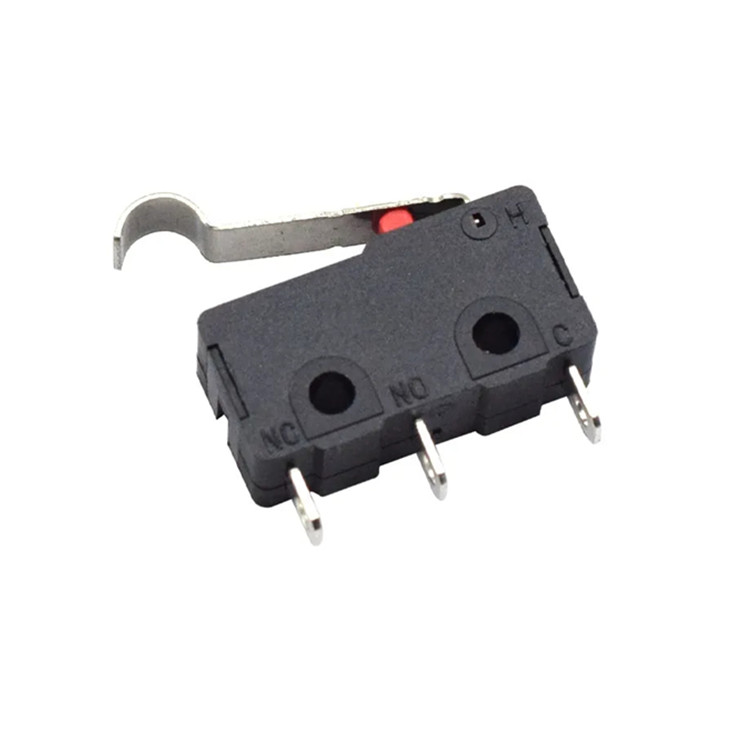Micro limit SWITCHes are essential components in countless modern machines and electronic systems. Despite their compact size, these switches play a critical role in detecting movement, managing positions, ensuring safety, and automating operations. Whether integrated into home appliances, industrial automation equipment, or precision instruments, the correct selection of a Micro Limit Switch can determine the overall functionality, safety, and lifespan of your device. This article explores key considerations to help engineers and equipment manufacturers choose the right micro limit switch for their application.

Micro limit switches are miniature electro-mechanical devices designed to detect physical movement. When a mechanical actuator or object makes contact with the switch, it triggers an electrical signal to control or stop further movement. These switches are commonly used for detecting the presence or absence of an object, limit positioning, counting operations, or providing safety interlocks.
Because they are small, highly sensitive, and versatile, micro limit switches are widely used in applications such as vending machines, elevators, HVAC systems, consumer electronics, robotics, and industrial machinery.
The actuator is the part of the switch that physically interacts with moving parts. Micro limit switches are available with various actuator types such as lever, roller lever, plunger, simulated roller, or leaf spring. The choice depends on the type of movement and the direction in which force is applied. For instance, a lever-type actuator is suitable for detecting sideway or rotary movement, while a plunger actuator is ideal for linear movements. Always select an actuator that complements the motion profile of your application.
Each micro limit switch requires a specific amount of force (operating force) to activate. If the operating mechanism does not apply enough force, the switch may fail to trigger. Similarly, the travel distance — the physical movement required to activate or deactivate the switch — should match the tolerances of your device. Low-force models are preferable for applications where gentle actuation is needed, while high-force versions offer resistance in environments prone to accidental activation.
It’s crucial to match the switch’s voltage and current ratings with the demands of your circuit. Exceeding these ratings can lead to switch failure, overheating, or safety hazards. Standard micro limit switches often handle currents from milliamps up to a few amps, and voltages ranging from 12V to 250V, AC or DC. If your application requires switching heavy loads or high-frequency operations, consider a switch rated for higher durability and consistent contact performance.
The contact type defines how the switch behaves when actuated. The most common configurations include SPDT (Single Pole Double Throw), SPST-NO (Normally Open), and SPST-NC (Normally Closed). For instance, a normally open switch closes the circuit when triggered, while a normally closed switch breaks the circuit upon actuation. Choose a contact arrangement that fits your logic circuit or safety system needs.
Equipment design often imposes restrictions on the size and mounting style of components. Micro limit switches come in various form factors such as panel mount, PCB mount, or side mount. Some designs are ultra-compact to fit into tight spaces, while others have standard sizes for easy replacement. Consider not just the physical dimensions but also the ease of installation and maintenance when selecting a switch.
If your application involves exposure to dust, moisture, chemicals, or extreme temperatures, you’ll need a switch designed to withstand harsh conditions. Look for IP-rated models (e.g., IP67) that offer protection against water and debris ingress. Stainless steel or plastic enclosures with protective boot covers can also increase reliability in demanding environments.
Depending on how frequently the switch will be operated, you should check its mechanical and electrical life ratings. High-quality micro limit switches can offer lifespans of several hundred thousand to millions of cycles. For high-cycle applications like vending machines or motorized equipment, durability is a key specification to consider.
Ensure the switch meets industry-specific standards or certifications such as CE, UL, RoHS, or ISO. Compliance with these standards guarantees safe and reliable performance in regulated environments.
Choosing the right micro limit switch is not just about matching specifications; it’s about ensuring the switch performs flawlessly in your specific application. Factors like actuator type, operating force, contact configuration, and environmental resistance all contribute to the switch’s suitability and longevity. By understanding your equipment’s exact requirements and evaluating the switch’s technical parameters, you can ensure efficient operation, reduce maintenance needs, and avoid costly failures.
Engineers and procurement teams should also consider working with reputable manufacturers or suppliers that offer technical support and customization options. With the right micro limit switch in place, you can build smarter, safer, and more reliable devices across various industries.








